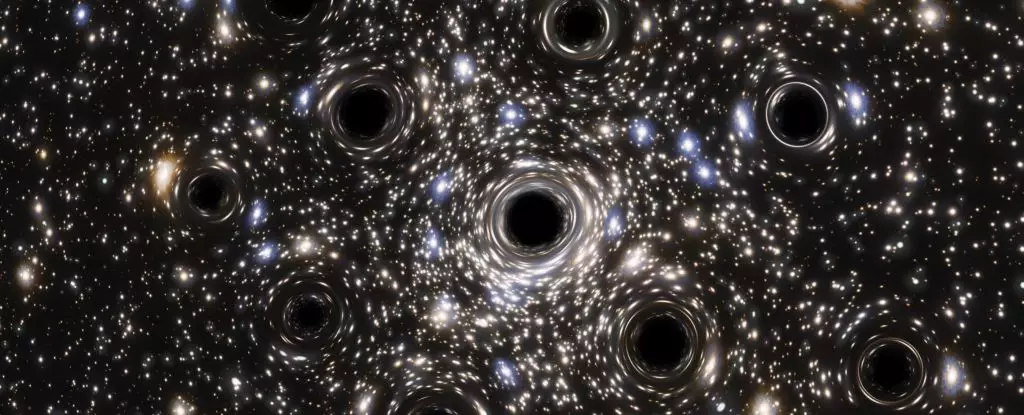The vast cosmos continually surprises us with new and tantalizing findings, none more compelling than the recent discoveries associated with Omega Centauri. Located approximately 17,000 light-years from Earth, Omega Centauri is a remarkable globular cluster considered one of the Milky Way’s most fascinating formations. For years, astronomers speculated about the presence of a significant gravitational mass at its core—originally deemed to be a singular supermassive black hole. However, the recent unearthing of multiple stellar-mass black holes has injected fresh dynamism into the ongoing study of this celestial body, raising new questions while challenging existing assumptions.
Astrophysicist Andrés Bañares Hernández and his team from the Institute of Astrophysics of the Canary Islands have shifted the paradigm of black hole research within Omega Centauri. Their findings present an alternative viewpoint, suggesting that instead of a single behemoth black hole, we might be observing a cluster of stellar-mass black holes. This revelation is significant, as it could bridge the gap between the smaller black holes formed from supernovae and the much larger supermassive black holes found at galactic centers, which are millions to billions of times more massive than the Sun.
Intermediate-mass black holes (IMBHs), theorized to occupy this middle ground, have eluded astronomers for decades. They remain unconfirmed entities, as scant evidence supports their existence. The latest findings about Omega Centauri not only breathe potential life into the IMBH hypothesis but also prompt an essential reconsideration of how we interpret gravitational influences within star clusters. With a mass recently refined to approximately 8,200 solar masses, the possibility arises that these findings could represent either a singular IMBH or a collection of smaller black holes.
An exciting facet of this investigation involved incorporating data from pulsars—rapidly rotating neutron stars that emit beams of radiation. Pulsars act like cosmic lighthouses, offering astronomers precise metrics for calculating various parameters, such as gravitational pulls and orbital patterns of neighboring celestial bodies. Bañares Hernández’s team recognized the invaluable role pulsars could play in navigating the complexities of Omega Centauri’s gravitational landscape. Their models indicated that the star motions within the cluster align more consistently with the presence of multiple stellar-mass black holes rather than a solitary IMBH.
Importantly, understanding the nuanced dynamics of these black holes is critical, as each black hole influences the motion of neighboring stars through gravitational interactions. This realization does not eliminate the possibility of an IMBH coexisting amongst the stellar-mass black holes; rather, it yields a more intricate picture of the galactic scenery where these celestial bodies reside.
While the evidence largely supports the existence of various stellar-mass black holes within Omega Centauri, significant uncertainties remain. Could these stellar-mass black holes coalesce to form an IMBH? Alternatively, might they be the remnants of an ancient dwarf galaxy’s core, forever altered by gravitational interactions with other stars? The complexities surrounding black holes challenge our capacity to definitively categorize and locate them, suggesting that our understanding is still in its infancy.
The quest for IMBHs continues to be a tantalizing pursuit in modern astrophysics. As we refine our observational techniques and theoretical models, each new discovery leads us closer to unraveling the mysteries of gravitational forces shaping our universe. The research surrounding Omega Centauri serves as a beacon of hope, not only illuminating the intricate relationships between different types of black holes but also offering insights into their evolutionary roles concerning star clusters and galaxies.
The findings concerning Omega Centauri provide a pivotal moment in the study of black holes and the broader cosmos. While they raise more questions than they answer, they pave the way for future investigations and encourage a reevaluation of how we conceptualize the life cycles of celestial bodies. As astronomical technology continues to develop, the enigma of Omega Centauri serves to remind us that the universe remains a boundless frontier, full of secrets waiting to be uncovered. The ongoing hunt for black holes, particularly the elusive IMBHs, is far from over, and every observation may yield keys to unlock the door to our cosmic understanding.


Leave a Reply